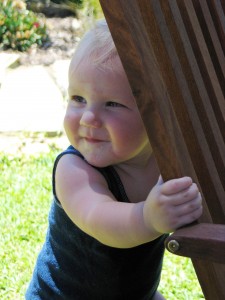During the first three years of life, a child’s brain grows to two-thirds of its adult size and is two and one-half times more active than the adult brain. In this time of explosive growth through sensory input and networking of brain cells, there are prime times – windows of opportunities- when the brain is particularly ready and eager to gain new skills. Becoming aware of these nine learning windows is a big part of making the most of the opportunities. They are classified as follows: Emotional, Creativity, Curiosity, Physical, Musical, Language, Logical and Math, Spiritual, and Values.

Opening these learning windows is not as complicated as it might seem. Children are learning all the time and because they are divinely inspired, they are naturally curious! In fact, children often give us cues as to which windows are ready to open. For instance, think about how a toddler experiences the world around him. Taking a walk automatically becomes a sensory rich learning experience when he asks you to describe and label what you are observing together. Doesn’t he naturally want to stop along the sidewalk to catch the blowing leaves or pick up little pebbles? Then, he will ask to touch and smell the flowers and talk about the dogs he hears barking or count the cars zooming by. Stepping over the sidewalk lines, which enhances balance and spacial awareness, will often delight him next. And if the components of creation, beauty, and stewardship are added through a little song, all nine windows will have been attempted in a single walk! By focusing on the learning windows, you will soon decipher many sensory opportunities in every day life which facilitate optimum learning.
Sometimes however, there might be one or more learning windows that seem sealed shut or only pry open a crack for your child. Although the windows of potential learning are available for all children, the timetable is not the same for everyone. Not only is each child unique, but some children have “road blocks” that keep learning from happening at expected times. For example, if you have an intense or dysregulated child, their development will be at a much slower pace and often such a child is emotionally about half their chronological age, as well. Additionally, a child that has come from hard places, such as a foster or adopted child, might have never had their world described or labeled and may need the saturated sensory input we would normally pour into a toddler. The windows of opportunity are still there, but must be opened at each child’s particular pace.
Parenting with the brain in mind focuses on the possibilities for your child, rather than his weaknesses. Remember, although the potential for learning is greater in the first ten years of life, learning doesn’t stop as long as there are challenges which match the brain’s developmental readiness. That’s why it is never too late to provide the nurturing, conversation, and stimulating activities that help children develop and learn. So take a deep breath, follow your child’s lead, and enjoy the breeze. Opening the learning windows is meant to be a delightful experience.